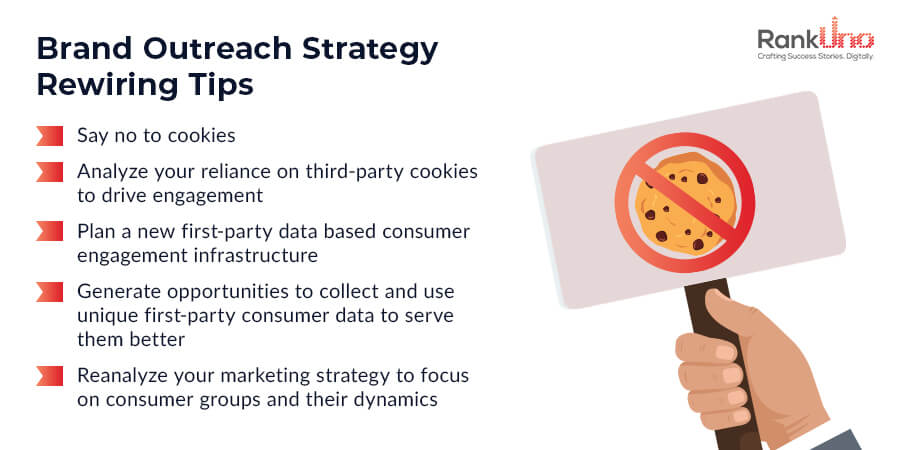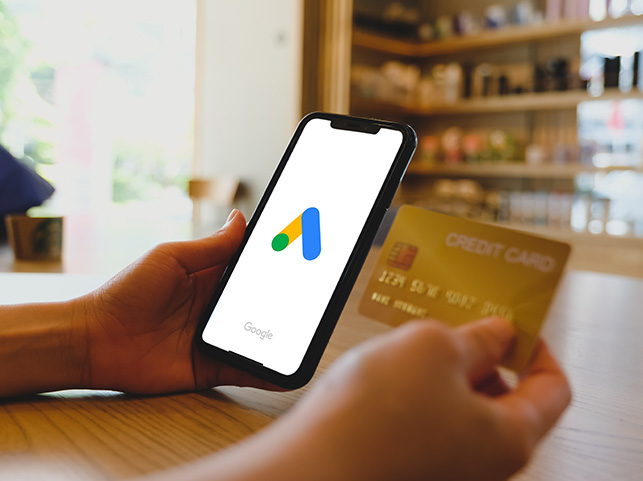Are cookies best kept in jars? With the purging of third-party cookies from the digital marketing mix, brands are skeptical about their marketing efforts in the future. However, change can lead to much good. As data privacy laws become more stringent, the tracking third-party cookies seem unwelcome on Google’s Chrome, the most popular browser presently. Companies are being forced to break out of the comfort zone and push towards trust-building for their brands to drive meaningful value for their marketing efforts. The answer lies in rethinking brand strategy and leveraging the data from first-party cookies.

In this blog, we will discuss:
- Are third-party cookies really needed?
- How brands can strategize their marketing efforts in a cookie-less world
- Leveraging first-party data effectively
Third-party cookies: Yay or nay?
Let us first establish that third-party cookies refer to those used by browsers to track information about web visitors and their browsing behavior from third-party websites. First-party cookies help website visitors remember their logins and other web preferences and are helpful for both web users and companies.
After years of targeted advertising using third-party cookies, data privacy laws have finally realized that customers need to be nurtured by brands and not just milked for their wallet share. This need to humanize drives the elimination of tracking cookies and rightly puts the choice of sharing information into the customers’ hands.
However, the move has left marketers in a lurch as third-party cookies brought in a lot of data that helped with personalized and targeted advertising. With the lack of such information, brands must rework their digital marketing strategies to reach their audience effectively. But first, it is important to dispel some misinformation about third-party cookies.
- A recent Forbes study pointed out that using third-party cookies for hyper-targeting was missing the bullseye! Although some targeting is better than no targeting, the over-reliance on third-party cookies for hyper-targeting has not been able to produce the result that brands expected. The sweet balance of optimum targeting is often replaced by more-is-better, whereas the truth may be far from it. Here’s where the quality of data and the quality of content for targeted marketing matters the most.
- Trust-building engagement will have to take precedence over mass marketing to build a brand in the post-cookie era. Third-party cookies left a sour aftertaste for consumers as their privacy was infringed, and data was used like raw material in a factory. With the big players in the internet space like Apple and Google refraining from tracking activities, humanizing the relationship between businesses and consumers can become a priority again.
- Marketers fear that the lack of third-party cookies will lead to ad fraud. However, there have been many instances of increased ad fraud with the help of bots pretending to be the target audience and assisting fraudsters in selling ad spots on fake sites. Doing away with third-party cookies will essentially dissuade such activities.
- Relying on third-party cookies as a magical database for accurate marketing has misfired enough times. There have been cases where brands reduced their allocation for such advertising and found no difference in the outcomes. The answer lies in sifting through mindless data and using quality content to reach the right audience. This can be achieved by pivoting marketing efforts from third-party cookies to first-party data.
Brand strategy in a cookie-less world
The removal of third-party cookies will change digital marketing. Brands and advertisers will have to design strategies that can smartly target ads without clear identifiers. From contextual advertising to better management of first-party cookies, digital marketing will focus on a human-first experience with relevant content to drive consumer engagement.
An executive survey by Delloite revealed that 61% of high-growth brands recognized the need to get ahead in a rapidly changing digital landscape by leveraging first-party data. The leaders used first-party data to deliver personalized content via dynamic creative optimization. They also used the data to serve ads to users via programmatic media. Other traditional channels that found favor were optimized emails and predictive marketing.

Here’s how your business can rethink data use and brand strategy for a holistic approach to digital marketing:
- Analyze the reliance on third-party cookies for reaching your target audience. Tools like the cookie calculator can help understand where the business relies most heavily on third-party cookies for customer interactions.
- Create a new infrastructure to include first-party data, such as a customer data platform (CDP), for a comprehensive view of all customer data throughout their relationship with your brand.
- Increase consumer value and create unique first-party data by generating opportunities for your consumers to engage and offer value in exchange for data. Customer loyalty programs and progressive profiling can help influence consumers to share information to serve them better.
- Rethink analytics to consider shifting focus from individuals to cohorts. Understanding cohort and group dynamics can help retarget and prospect while building and deepening customer relationships.
First-party data to the rescue
Here’s how it is possible to use first-party cookies to move towards enriching digital experiences in a third-party, cookie-less future:
- Register your users – Start with the simplest yet effective piece of data—the email address. Encourage users to register using this data to know who your users are. Instances where emails can be requested are newsletters, cart check-outs, loyalty programs, first buyer freebies etc. However, be honest about how the business will use this information to build trust and encourage more data sharing.
- Start slow and build up – Progressive profiling is better than asking for all information in one go. Often customers may shy away from entering additional information but may settle for an email address. Progressive profiling will allow the brand to aggregate the data generated at every touchpoint without overwhelming the consumer.
- Use email and SMS marketing – Don’t disregard the power of emails and SMS messages. They reach the consumer directly without third-party cookies. When used correctly with quality content, they can be excellent media for mass communication of news like sales, discounts, promotions and changes.
- Explore contextual advertising – Marketing at the right place about the right product and hoping it gets seen by the right people is what contextual advertising is essentially about. It is turning out far more effective and less invasive than retargeting ads to web users based on third-party cookies.
- Consider hybrid digital marketing – In-house marketing efforts have limitations but have greater insight about their product or service. Total outsourcing can lead to a lack of focus and misled advertising. The solution is a hybrid model that relies on partners like RankUno, who understand the brand and the market and provide quality content to engage consumers positively.
Over the years, brands have had a negative experience with the poor performance of third-party cookies in pointing out the behavioral intent of web users, although many of them could be reached directly. Moreover, rising ad frauds caused rising costs and diminished visibility. Fed up customers turned to sophisticated ad blockers, and the net result was not profitable to either party. The light at the end of this tunnel are first-party cookies which not only respects the consumers’ privacy but also build trust and add value to the business relationship. Moving away from a cookie crumb trail, personalizing the customer journey now will require new brand marketing strategies and engaging content.





